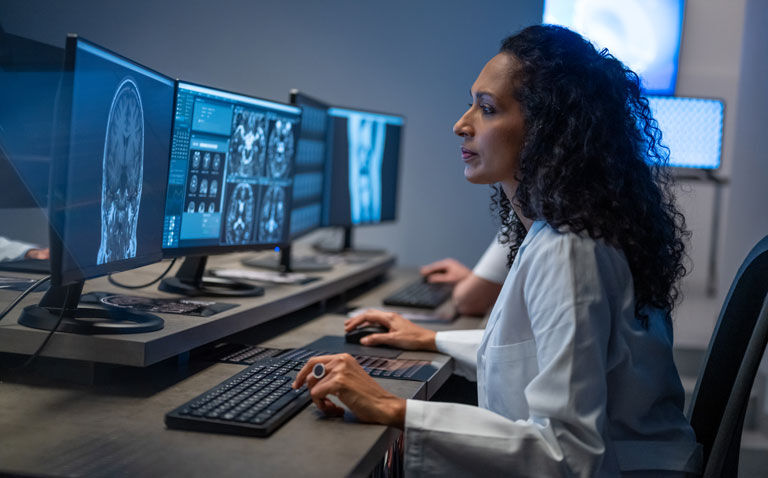Non-physician staff within US radiology services undertake a larger role in clinical evaluation, invasive work and image interpretation
Non-physician staff have assumed a a bigger role within US radiology services over the last few years and which includes clinical evaluation and management, invasive procedures and image interpretation according to the findings of a study by a team of US researchers.
With an increased need for radiological imaging there has been greater use of non-physician staff (also referred to as non-physician providers (NPPs), although this development has been controversial. While there is evidence that the number of practices employing NPPs increased by 10.5% between 2017 and 2019, far less is known about their role.
It is known for instance, that NPPs increasingly perform imaging-guided procedures as highlighted in a 2015 study which also found that NPPs rarely interpret diagnostic imaging but if they did, it was mainly for radiography and fluoroscopy.
As a result, for the present study, the US team attempted to better understand if and how, the role of non-physician staff had evolved in the last few years. They examined the changes between 2017 and 2019 and used Medicare data sets to characterise the clinical roles of these staff.
The team focused on three areas: clinical evaluation and management, invasive image-guided procedures and non-invasive diagnostic imaging and interpretation. Using these three categories, the researchers looked at the percentage of all radiology non-physician staff who billed for each service category.
Non-physician staff roles
In 2019, of the 382 non-physician staff submitting claims, 62% were female and with a mean of 10.7 years of experience since training. The majority (80.2%) identified as physician assistants with the remainder being nurse practitioners.
Between 2017 and 2019, the number of practices employing NPPs increased from 8.6% to 15%. In addition, non-physician staff in radiology practices who submitted claims to Medicare increased by16.3% and their fee for service work claims increased by 17.3%.
When researchers looked at each of the three clinical areas, there was a 40% increase for clinical evaluation and management services, a 5.6% increased for invasive procedures and a 74% increase for non-invasive imaging interpretation services.
The most frequently billed services were for paracentesis (19.9% of all claims) and thoracentesis (15.6%). For image interpretation, 86.7% of all services were for bone densitometry and swallowing studies.
The authors noted that while the number of non-physician staff has increased, their study was unable to determine the outcomes associated these changes. In other words, it was not possible to opine on whether this increase was either beneficial or detrimental to patient care.
They concluded that there was a definite increase in the use of non-physician staff within radiology practices and that this fact alone, would most likely increase patient access to radiology services. However, future studies would be required to better understand the impact of these changes on patient care and the radiology workforce.
Citation
Santavicca S et al. Professional Services Rendered by Nurse Practitioners and Physician Assistants Employed by Radiology Practices: Characteristics and Trends From 2017 Through 2019 J Am Coll Radiol 2022










